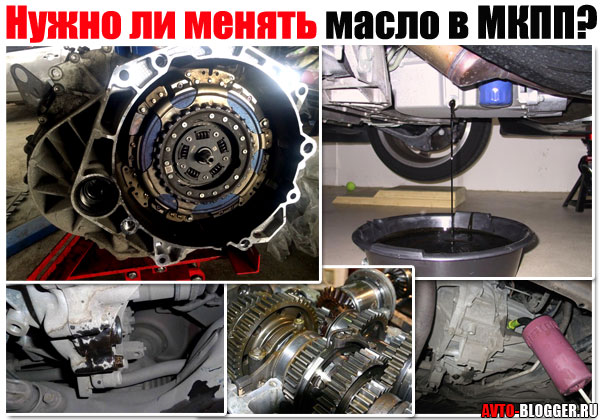
Gearbox oil - how often to change?
Content
Many manufacturers rely on the service life of the gear oil, but practice shows that such gearboxes, in which the oil is not changed, can withstand less mileage. This applies to particularly sensitive machines. So the question should not be: is it worth changing the oil? Early: How often do you change the gearbox oil?
It’s worth starting with the fact that a common mistake that often appears in many publications is that the first time the oil in the transmission can be changed after about 100 thousand. km, and then more often. Exactly the opposite - it must be changed after 5-10 thousand. km.
The transmission, like the engine and other mechanisms, goes through a so-called lapping process, in which the mechanisms are “aligned” with each other. This also means that metal interacting elements wear out disproportionately quickly to subsequent replacements. Therefore, the oil in the gearbox of a new car often becomes more contaminated after the first 10 km than after replacing it and driving even a thousand km. However, contamination should not be confused with so-called oil degradation.
Manual Transmission
In a manual transmission oil performs exactly the same functions as engine oili.e. mainly for lubrication, but also for cooling or absorbing pollutants. Since it does not work in particularly harsh conditions - with the exception of sports and off-road vehicles - it can last a long time. It makes no sense to replace it more often than every 60-100 thousand. km.
The exception is heavy loads and difficult working conditions. In a sports car with a powerful engine, the transmission is loaded more than in a conventional passenger car. If used for sports driving, it is worth changing the oil every 40. km.
The same applies to the car on which it stands. you often pull a trailer. then The gearbox operates at a higher temperature, so the oil degrades. The most severe conditions apply to off-road vehicles, but those that are actually used for off-road driving. Sometimes the box gets flooded with water, which should result in its replacement. So, if not every 40 km, at least every time after a deep ford, you should change the oil in the transmission.
Automatic transmission
Automatic transmissions use hydraulic oils, and their additional function is to create the pressure necessary to operate such a transmission. Moreover, especially in automatic transmission oil has a cooling function. Therefore, its replacement is important and has the greatest impact on the durability of mechanisms.
The hydraulic oil in the car should be changed every 40-60 thousand. km depending on operating conditions. In case of difficult conditions described earlier, this lower limit should be adhered to and even the oil change interval should be reduced to about 30 thousand. km. This is especially recommended when using the vehicle for towing or dynamic driving. However, if the automatic transmission is flooded with water while driving off-road, the oil should be changed as soon as possible, as water will quickly damage the transmission.
Oil change - static or dynamic?
There are two types of this treatment - static and dynamic oil change.
- Static method consists in unscrewing the drain plug or oil pan, draining the old oil and pouring new oil into the gearbox through the filler plug. The main advantage of such a replacement is its cheapness, and the disadvantage is the inability to drain all the oil from most designs, and also, in some cases, the need to replace the gasket under the cover if it is necessary to unscrew it. In many automatic boxes, only half can be filled in this way.
- Dynamic method is based on the use of a machine, the end of which, inserted into the gearbox, sucks out the oil. The biggest advantage of this method is that more of the old oil is poured out, and the minor disadvantage is that the replacement cost is slightly higher.
What oil is in the gearbox?
In fact, there is no definite answer to this question, because the design of the gearbox - both manual and automatic - is slightly different for each type and requires the use of appropriate components or the rejection of them. For example, some gearbox components may corrode when in contact with a component that is needed in a different type of gearbox. Interestingly, some manual transmissions use engine oil. Therefore, always check the owner's manual or ask an authorized service center which oil to fill before deciding to change the oil in the gearbox.